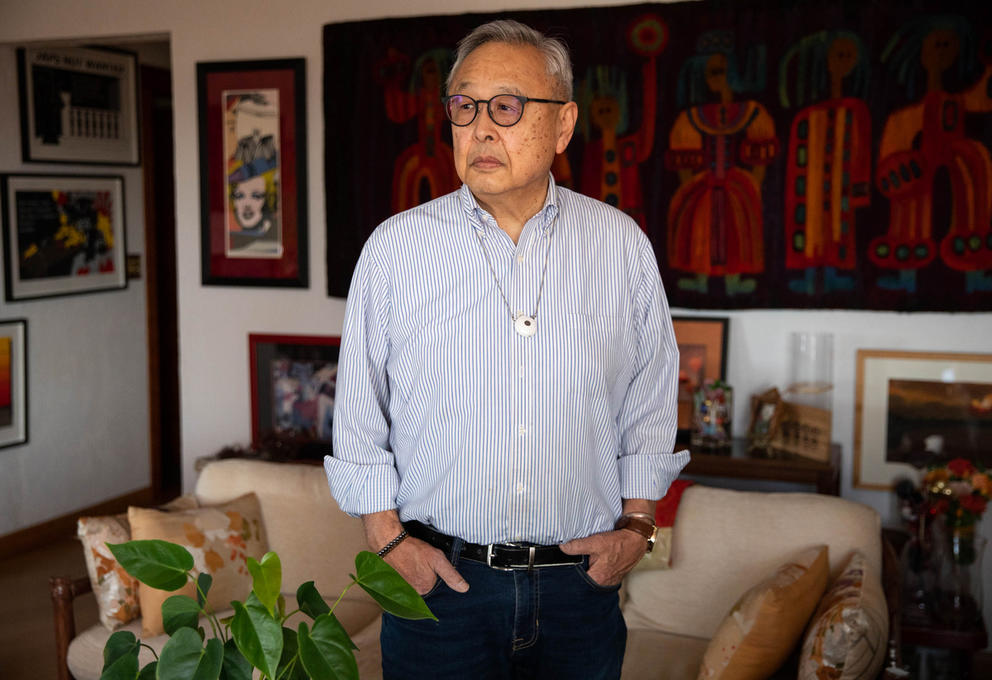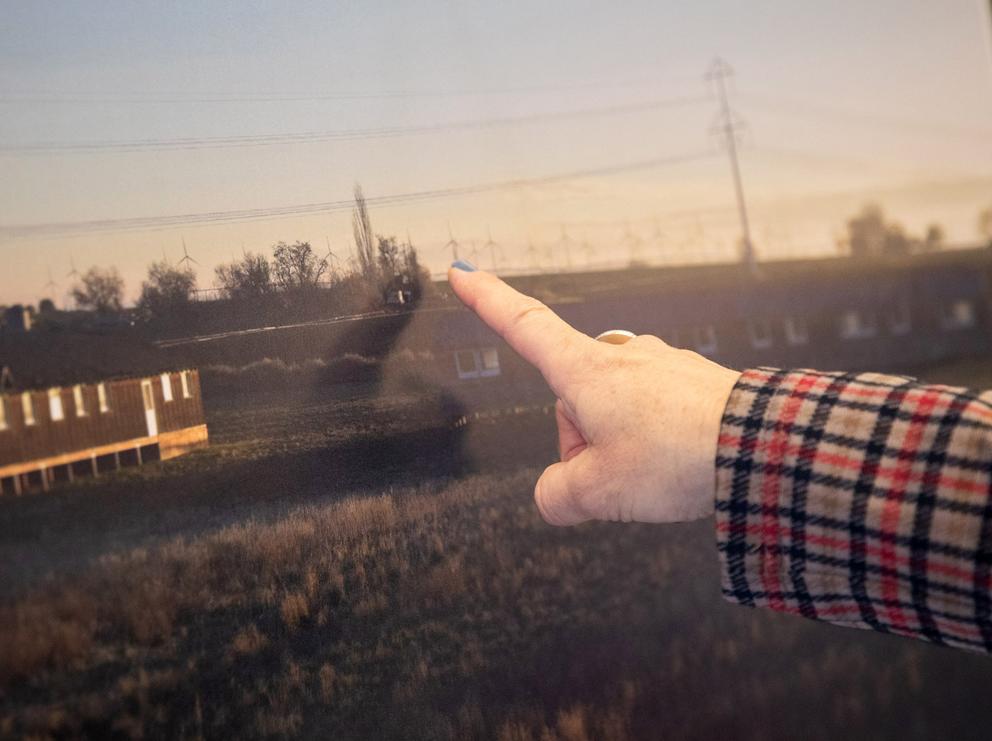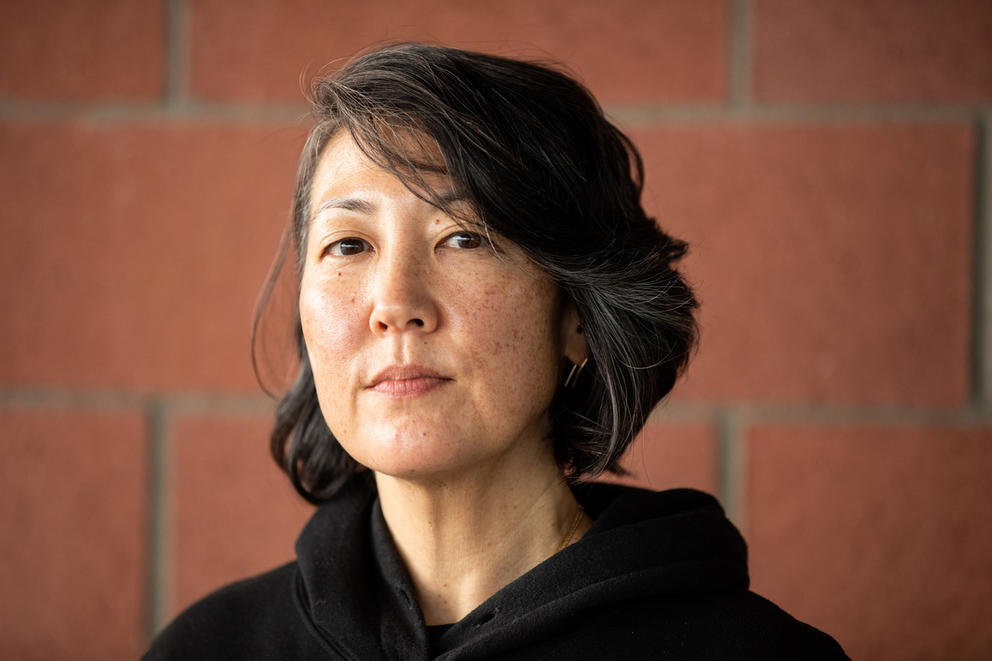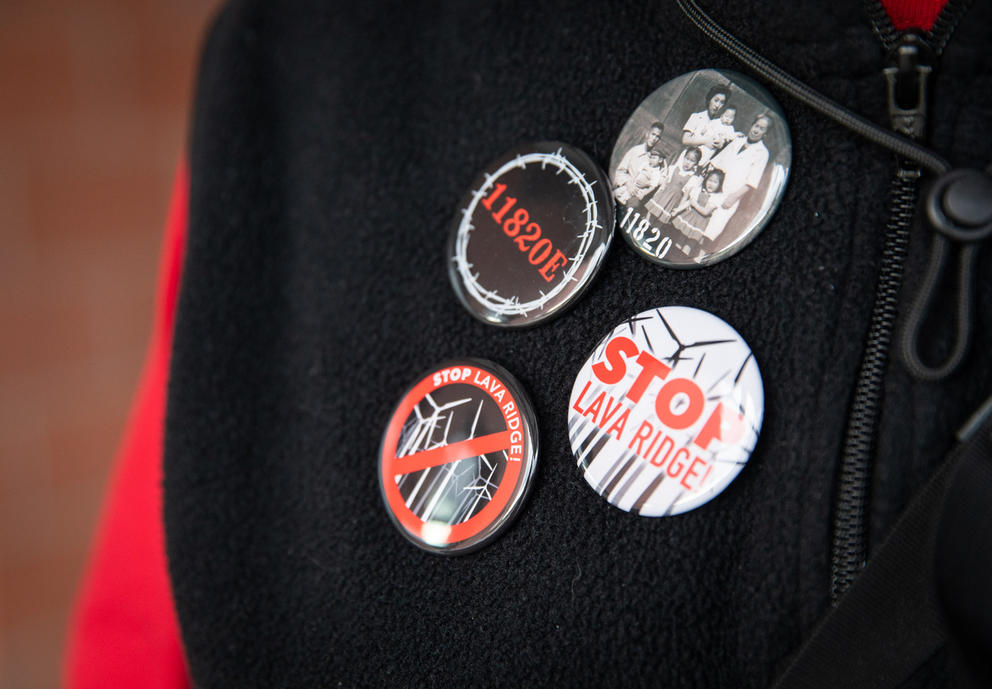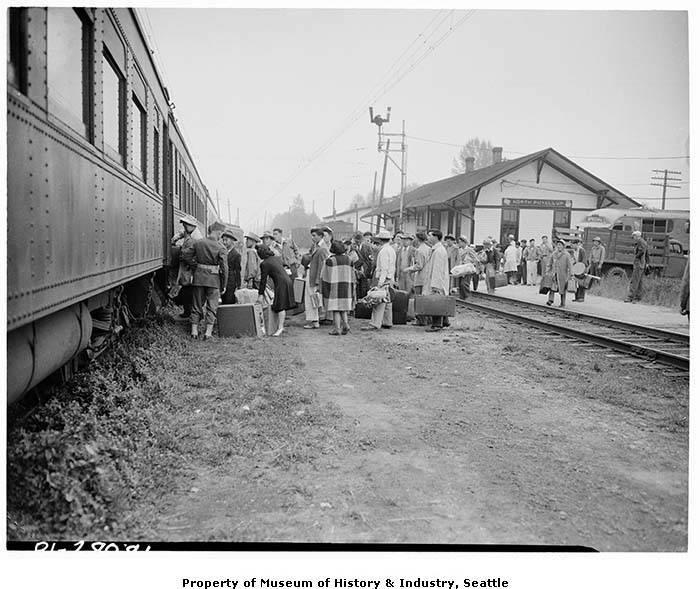Now she and others are worried a massive wind project could forever change the landscape of Minidoka, a National Historic Site.
“The total experience of being a prisoner would be lost,” Abo said. “To me, Minidoka as it stands today is evidence of a[n] American concentration camp.”
Magic Valley Energy, LLC, an affiliate of LS Power, is trying to get the Bureau of Land Management’s approval to build the Lava Ridge Wind Project, which includes up to 400 wind turbines, in Jerome, Lincoln and Minidoka counties. The project would be constructed on a mix of federal, state and private land.
Lava Ridge’s proximity to the site of the Minidoka camp worries survivors and descendants, who fear it could disrupt visitors commemorating the legacy of Japanese American incarceration. The Bureau of Land Management outlined alternatives to the original proposal in its Draft Environmental Impact Statement that could minimize the project’s impact on Minidoka, but many Japanese Americans believe scrapping it altogether is the only option worth considering.
The Bureau is trying to glean how people feel about its draft impact statement, taking public comments through April 20 and hosting open houses, including its most recent meeting on Mercer Island in early March.
The agency’s current role is to gather as much information as needed, said project manager Kasey Prestwich of the BLM. “So we’re looking at the potential impacts that could result from the project to help inform that decision.”
For survivors and descendants of Japanese American incarceration, there’s no way the project and Minidoka can coexist.
Mary Tanaka Abo, who opposes the Lava Ridge Wind Project, holds a sign with a photo of her as a young girl with classmates in Minidoka, at the open house hosted by the Bureau of Land Management at Mercer Island Community and Event Center on Thursday, March 2, 2023. The Lava Ridge Wind Project has generated pushback from survivors of Japanese American incarceration in WWII, who say the project will adversely impact the Minidoka National Historic Site, where many Japanese Americans were imprisoned. (Amanda Snyder/Crosscut)
Going to Minidoka
After Japan bombed Pearl Harbor on Dec. 7, 1941, U.S. President Franklin D. Roosevelt issued Executive Order 9066, which forced Japanese Americans out of their homes and into concentration camps like Minidoka.
Abo and her family were taken from their home in Alaska when the order was issued. She ended up in Minidoka with her mother and siblings, while her father landed in a Department of Justice camp in Santa Fe. Her older brothers found temporary work on a beet farm outside of the camp in Idaho and the oldest of the two eventually joined the 442nd Regimental Combat Team. Abo’s father was eventually paroled to join the rest of the family in Minidoka two years later.
In 1988, the federal government apologized for the incarceration and offered $20,000 payments to survivors. Minidoka is still important to Abo, who has revisited the camp more than once.
“For anyone who’s experienced trauma, it takes a lot of courage to go back to the place where it all happened,” she said. “Where such unhappiness occurred. And such tension and shame and guilt … It’s good to face what you fear.”
She was one of more than 100,000 Japanese Americans sent to the camps during World War II. Others, like Lawrence Matsuda and Erin Shigaki’s father, John Shigaki, were born into incarceration. In the absence of a regular doctor, Shigaki said a horse veterinarian delivered her father.
“I think that, you know, really puts an exclamation mark on the fact that this was a prison camp and there was a lot of bad treatment inside of it,” she said. “And then, of course, wonderful things happened there. My mom’s parents were matched and married inside of the camp.”
Much of Shigaki’s family returned to the West Coast after incarceration, and as she got older she started to learn about her relatives’ experiences during the war. Now she co-chairs the Minidoka Pilgrimage Planning Committee, a Seattle-based volunteer group that organizes annual trips to the site.
“America put children and families into concentration camps and that’s why this place is important,” she said, adding there are still lessons to be learned from it. “Because we’re still putting families and children into detention, into prison camps.”
‘400 Space Needles’
Paul Tomita and his wife have driven across the country – to Arkansas, Texas, North Dakota and Montana – so they can see where Japanese Americans were incarcerated during the war. These camps signify a personal part of history for Tomita, who lived in Minidoka as a young child.
He described spending “a good amount of time in the hospital” during this period, his asthma exacerbated by the dusty conditions at the camp. His father, fearful for his son’s health, successfully worked to get most of the family out of Minidoka by getting a job with the federal government that enabled them to live on the East Coast for the remainder of the war.
Tomita’s stay was relatively brief compared to others’, but he still finds value in returning to the camp. The proposed wind turbines near Minidoka feel like a dismissal of Japanese American history to Tomita, who questioned what would happen if the site in question was a white memorial to veterans who died during World War II, Vietnam or Korea.
“Would you build it near there?” he said. “My answer to them is hell no, of course not. You wouldn’t.”
Shigaki echoed this sentiment in an interview with Crosscut, arguing that people of color get “pushed around for so-called development.”
Stephen Kitajo of Auburn has been with the Pilgrimage Planning Committee for about a decade. Kitajo, whose relatives were incarcerated at Minidoka, views the site as a place of learning, healing and reflection.
“As soon as projects like this start chipping away at the integrity of the site … Things are just going to keep chipping away at it,” he said.
The proposed construction has unnerved survivors and their descendants. One graphic compares the potential height of the turbines to other recognizable structures like the Statue of Liberty and the Washington Monument.
The Space Needle, standing at just over 600 feet, is one of the most height-comparable landmarks, though the wind turbines could potentially be more than 100 feet taller.
“Can you imagine 400 Space Needles surrounding a site?” Matsuda said.
There are plenty of places for the wind turbines to go, but only one Minidoka, said Matsuda. He worried about different ways the project could infringe on the site: noise, sun reflecting off the blades, birds flying into the windmills.
Minimizing the impacts
The Bureau of Land Management took a different approach with this proposal by going outside the local area to connect with communities who have a stake in the project.
“That is an important site for [Japanese Americans] and they regularly have pilgrimages there,” project manager Prestwich said. “They’ve expressed concerns that the project could diminish how they could effectively use that area, and we’re looking for ways to ensure that the decision that gets made on the project considers that.”
Though people have called for the project to be moved elsewhere, Prestwich noted that the proposed location offers certain ideal conditions, like access to a transmission line and a viable wind resource.
The project has also raised concerns in other key areas, including its potential impact on the treaty rights of Shoshone-Bannock Tribes and on livestock grazing operations.
Magic Valley Energy offered reassurances about its projects on a Frequently Asked Questions page, noting that people can still hunt and recreate on public lands after construction wraps; that turbine noise won’t be too loud; and that the company will carry out “all aspects of the project with the intent of minimizing effects to environmental resources.”
In an email to Crosscut, Magic Valley Energy said refining the project in response to public comment and concerns is working.
“We’re open to further engagement and modifications to ensure this project honors the survivors of Minidoka and continues to be a reminder to all Americans of their story and look to the BLM’s process to guide those revisions,” Amy Schutte at Magic Valley Energy wrote.
Schutte said they “continue to reach out to Japanese-American stakeholders to engage in ways to support them in telling this important story while honoring their history and this important site.”
Eugene Tagawa wears pins with his family’s photo and the number tag for his family, who were in Minidoka. Tagawa opposes the Lava Ridge Wind Project and attended the open house hosted by the Bureau of Land Management at Mercer Island Community and Event Center on Thursday, March 2, 2023. (Amanda Snyder/Crosscut)
What comes next
The bureau will take public comments on the draft environmental impact statement until April 20. Prestwich said the agency is looking to have a final environmental impact statement out this summer, followed by a Record of Decision in the fall.
“I love my community, I think my community is very smart,” Shigaki said. “But I think the process is complicated, technical, a little designed for us to fail. So, you know, I’m just going to try to help folks get their comments in.”
The draft impact statement outlines alternatives to the original proposal, but many advocates are only interested in one: alternative A, or no action.
The story of Minidoka, traumatic as it may be, is one Tomita wants to preserve.
“Not near our site, our historic site, our sacred site,” he said of the project. “It was ugly there, but it’s our history.”

